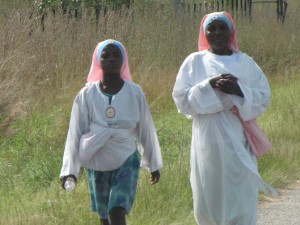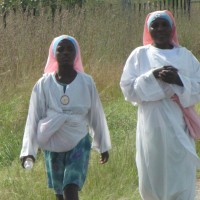I visited the continent of Africa for the first time in 1993, and like most Americans of my generation, I arrived with a mind filled with misconceptions. I’d grown up being bombarded by the distorted cinematic portrayals (most notably the Tarzan movies, which weren’t even filmed in Africa, but in Mexico), popular media focus on the continent’s problems, National Geographic magazine with its exotic animals and people, and a lack of content in the world history courses I’d taken up to that time. Africa, ‘the Dark Continent’, was terra incognita in my mind – a monolithic place of poverty and war. Even the so-called Africa Hands at the State Department where I worked at the time, tended to refer to ‘Africa’ as if it was somehow a single state rather than a diverse collection of cultures and people.
My first African ‘home’ was Sierra Leone, where I lived for three years while I was assigned to the American Embassy in Freetown. The country was in the throes of a violent civil war and ruled by a military dictatorship. Despite these conditions, though, I quickly discovered that it was far from a total lost cause. In the first place, the country, as small as it was, was amazingly diverse. Sure, there was violence, hunger, disease, poverty, and corruption. But, there was also resilience, love, laughter, and a desire to live a better life. The terrain wasn’t the steaming jungles of the Tarzan films. There were mountains, plains, and forests. Driving through some of the villages in the northwest region of Sierra Leone reminded me of some of Georgia or Alabama’s back country roads.
I’ve been an avid photographer since my teens, but I didn’t take my camera with me to Sierra Leone in 1993 – much to my regret. I would love to have been able to document my travels throughout the country. I got that chance decades later. In 2009, the State Department assigned me to Zimbabwe, another country in turmoil. There was no war, but disease, political violence, and economic instability affected most of the country’s population. I’d only been in southern Africa once before – I visited Johannesburg, South Africa in 1994 right after the end of apartheid – and only for a few days. So, I was unprepared for Zimbabwe. The briefings had led me to expect gun-wielding soldiers on every street corner and children with swollen bellies playing in sewage. The country had – and still has – its problems, but nothing like that. I found that you could walk the streets of Harare or Bulawayo and not even be aware of the political or human rights problems. They were still there, but existing alongside positive things as well – things that seldom found their way into the international media coverage of the country.
I traveled the length and breadth of Zimbabwe during my three-year stay; always with my camera handy. I was determined to document the many faces of the country. Since other media were doing a good job of documenting the negative, though, I emphasized the other side of the coin. Smiling faces, fantastic landscapes, diverse wildlife – all showing Zimbabwe’s potential, if only its leadership would focus more on developing true economic security for the population. I’ve been a freelance writer and photographer for decades, and while I lived there, I did a number of articles on Zimbabwe’s tourism potential, but I wanted to do more. I wanted to show the world that Africa is not a ‘single’ place, but like the world’s other continents, a place of immense diversity. A place that has both good and bad, beauty and ugliness. I’ve done two photo-journals focusing on Zimbabwe: African Places: A Photographic Journey Through Zimbabwe and southern Africa, which I published in June 2012, a few months before I returned to the United States to retire from government service. My most recent, A Portrait of Africa, was published in January 2014, and while it includes photos from other areas (Senegal, Cameroon, South Africa, and Tanzania), as with the first book, the bulk of the photos were taken during my travels throughout Zimbabwe.
It is my wish that those reading A Portrait of Africa, whether African or non-African, will come away with an enhanced appreciation of the diversity and potential of the continent that is the birthplace of humanity – that they will be able to see beyond the popular images to the reality that lies just beneath the skin. What I hope everyone reading this book will see is that there is still hope – hope for the African continent, hope for Zimbabwe, and hope for us all.

This has been a submission by Charles Ray.
You can connect with Charles via the following: http://charlesaray.blogspot.com, http://twitter.com/charlieray45, http://www.facebook.com/CharlieRay45.
You too can become a Citizen Journalist by submitting your story here: Citizen Journalism by Living Zimbabwe
The views expressed in the article are those of the author and not necessarily Living Zimbabwe.


No comments yet.